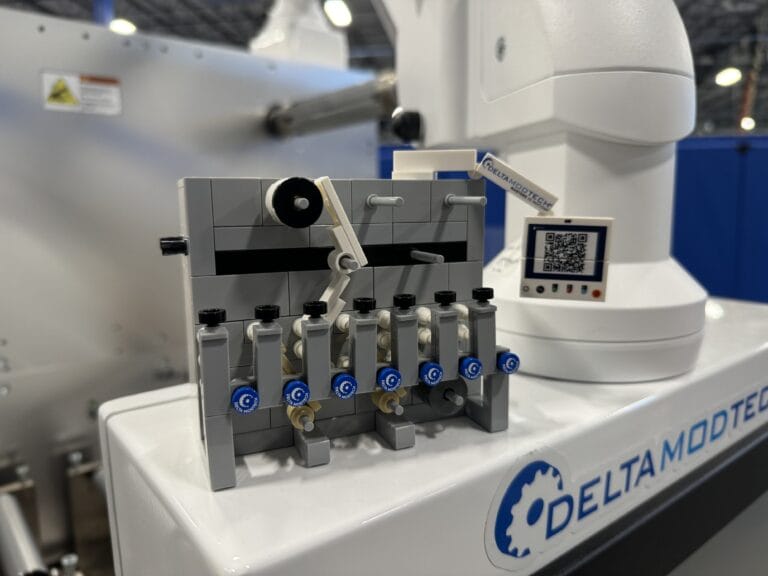
Avoid the Digital Label Printing Back-End Bottleneck
Digital printing presses have changed the game for label makers. You can make a decent profit on a variety of smaller, more complex jobs that a mechanical flexographic machine just can’t handle cost-effectively.
In the excitement of making the transition to digital printing, however, too many printers overlook a crucial factor: making sure the finishing machine can keep up with the printing output.
If you have to stop your presses to wait for the finishing machine, you can’t be getting the most out of your investment. Avoid this back-end bottleneck by considering four factors:
1. Running speed isn’t the only need. Every manufacturer of finishing machines for digital label printing will tout how much faster their machines are than traditional die cutters. Rather than swapping out big, heavy rotary dies, you’re just swapping out thin, magnetic die plates. Easy, right?
Not so fast. Yes, it’s easier to swap out a thin die plate than a rotary die. But the rotary dies were typically changed once per shift or once per day, if that.
With multiple jobs on a single roll, you may be changing the flex die plates several times per roll and many times per shift.
That’s why you can’t judge a machine solely on its running speed — it’s also important to know how long it takes to get a new job up and in registration.
If you’re visiting manufacturer, ask them to demonstrate some die plate changeovers. Time it. Follow up with the digital printer vendor to be sure the finishing machine will be able to keep up.

2. Plan on a two-stage training process. While a demo in the manufacturing shop is a useful exercise, it usually isn’t the same as running jobs in your shop. One reason is that your specific needs may require customized hardware or different configurations than the demo machine.
Even a thorough training program when you first receive your machine probably won’t address every situation you’ll encounter. Also, it often takes time to practice the basics before you’re ready to ask the right questions and refine your workflow.
Give your crew that time. Let them run enough jobs across as many types of orders as possible, then schedule some follow-up training.
We’ve found these follow-up training sessions to be very effective, especially with companies new to digital printing and finishing machines.
3. Use a virtual connection to your control panel. As you search for the right finishing machine, look for models with control boards that permit virtual connections to online tech support. You need access to an expert who can trouble-shoot and guide you through the settings.
It can also help if the control panel includes a simple screen specifically for labels, without a bunch of unnecessary fields.
4. Order flexible dies with consistent specs. As often as possible, print your I-Marks the same distance from the edge of the label from job to job.
This way, you can order flexible die plates that consistently use the same distance from the leading edge of the plate to the leading edge of the first die cut.
You can save a significant amount of time getting a new plate onto the magnetic cylinder and getting into registration if these measurements stay the same from one job to the next.
Paying good press operators to stand around waiting for the finishing machine isn’t what you expect when your first digital printer arrives in your shop. So start the digital transition process with the end in mind.
For more information on how you can maximize your uptime with your digital finishing press, contact your Delta ModTech Manufacturing expert.
OVERCOME YOUR BIGGEST CONVERTING AND PACKAGING CHALLENGES
Published on Jul 05 2015
Categories: Delta ModTech Blog, Uptime
Previous Post
Delta Industrial Unveils New Logo, Strengthens Identity

